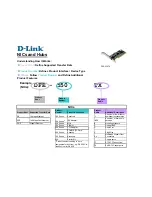
• Enable SNMP traps for RSTP, MSTP, and PVST+ collectively.
snmp-server enable traps xstp
Configuring Spanning Trees as Hitless
You can configure STP, RSTP, MSTP, and PVST+ to be hitless (configure all or none as hitless). When
configured as hitless, critical protocol state information is synchronized between the RPMs so that RPM
failover is seamless and no topology change is triggered.
To be hitless per spanning tree type or for all spanning tree types, use the following commands.
• Configure LACP to be hitless.
CONFIGURATION mode
redundancy protocol lacp
• Configure all spanning tree types to be hitless.
CONFIGURATION mode
redundancy protocol xstp
Example of Configuring all Spanning Tree Types to be Hitless
Dell(conf)#redundancy protocol xstp
Dell#show running-config redundancy
!
redundancy protocol xstp
Dell#
STP Loop Guard
The STP loop guard feature provides protection against Layer 2 forwarding loops (STP loops) caused by a
hardware failure, such as a cable failure or an interface fault. When a cable or interface fails, a participating
STP link may become unidirectional (STP requires links to be bidirectional) and an STP port does not receive
BPDUs. When an STP blocking port does not receive BPDUs, it transitions to a Forwarding state. This
condition can create a loop in the network.
For example, in the following example (STP topology 1, upper left), Switch A is the root switch and Switch B
normally transmits BPDUs to Switch C. The link between Switch C and Switch B is in a Blocking state.
However, if there is a unidirectional link failure (STP topology 1, lower left), Switch C does not receive BPDUs
from Switch B. When the
max-age
timer expires, the STP port on Switch C becomes unblocked and
transitions to Forwarding state. A loop is created as both Switch A and Switch C transmit traffic to Switch B.
As shown in the following illustration (STP topology 2, upper right), a loop can also be created if the
forwarding port on Switch B becomes busy and does not forward BPDUs within the configured
forward-
delay
time. As a result, the blocking port on Switch C transitions to a forwarding state, and both Switch A
and Switch C transmit traffic to Switch B (STP topology 2, lower right).
As shown in STP topology 3 (bottom middle), after you enable loop guard on an STP port or port-channel on
Switch C, if no BPDUs are received and the
max-age
timer expires, the port transitions from a blocked state
Spanning Tree Protocol (STP)
1058
Summary of Contents for S4048T
Page 1: ...Dell Configuration Guide for the S4048T ON System 9 10 0 1 ...
Page 98: ... saveenv 7 Reload the system uBoot mode reset Management 98 ...
Page 113: ...Total CFM Pkts 10303 CCM Pkts 0 LBM Pkts 0 LTM Pkts 3 LBR Pkts 0 LTR Pkts 0 802 1ag 113 ...
Page 411: ...mode transit no disable Force10 Resilient Ring Protocol FRRP 411 ...
Page 590: ...Figure 67 Inspecting the LAG Configuration Link Aggregation Control Protocol LACP 590 ...
Page 646: ...Figure 87 Configuring Interfaces for MSDP Multicast Source Discovery Protocol MSDP 646 ...
Page 647: ...Figure 88 Configuring OSPF and BGP for MSDP Multicast Source Discovery Protocol MSDP 647 ...
Page 653: ...Figure 91 MSDP Default Peer Scenario 2 Multicast Source Discovery Protocol MSDP 653 ...
Page 654: ...Figure 92 MSDP Default Peer Scenario 3 Multicast Source Discovery Protocol MSDP 654 ...
Page 955: ...Figure 119 Single and Double Tag First byte TPID Match Service Provider Bridging 955 ...
















































